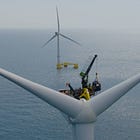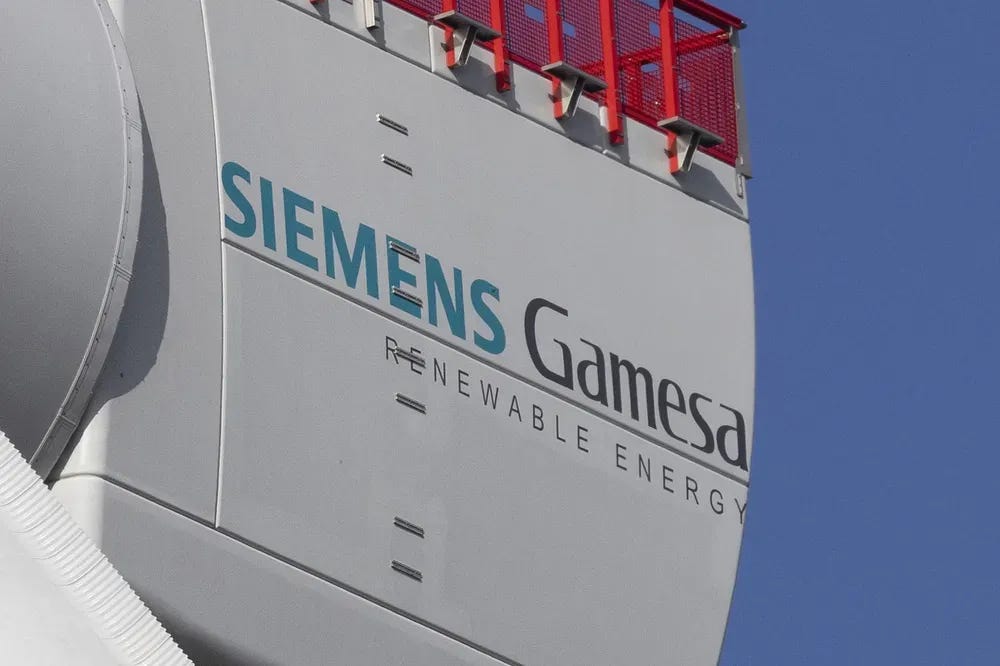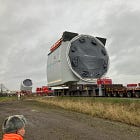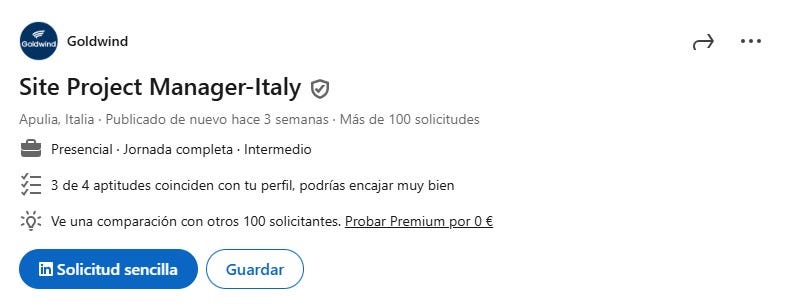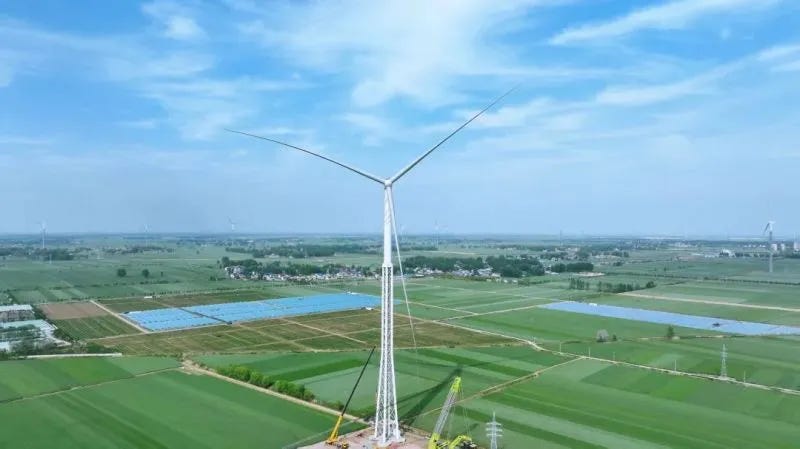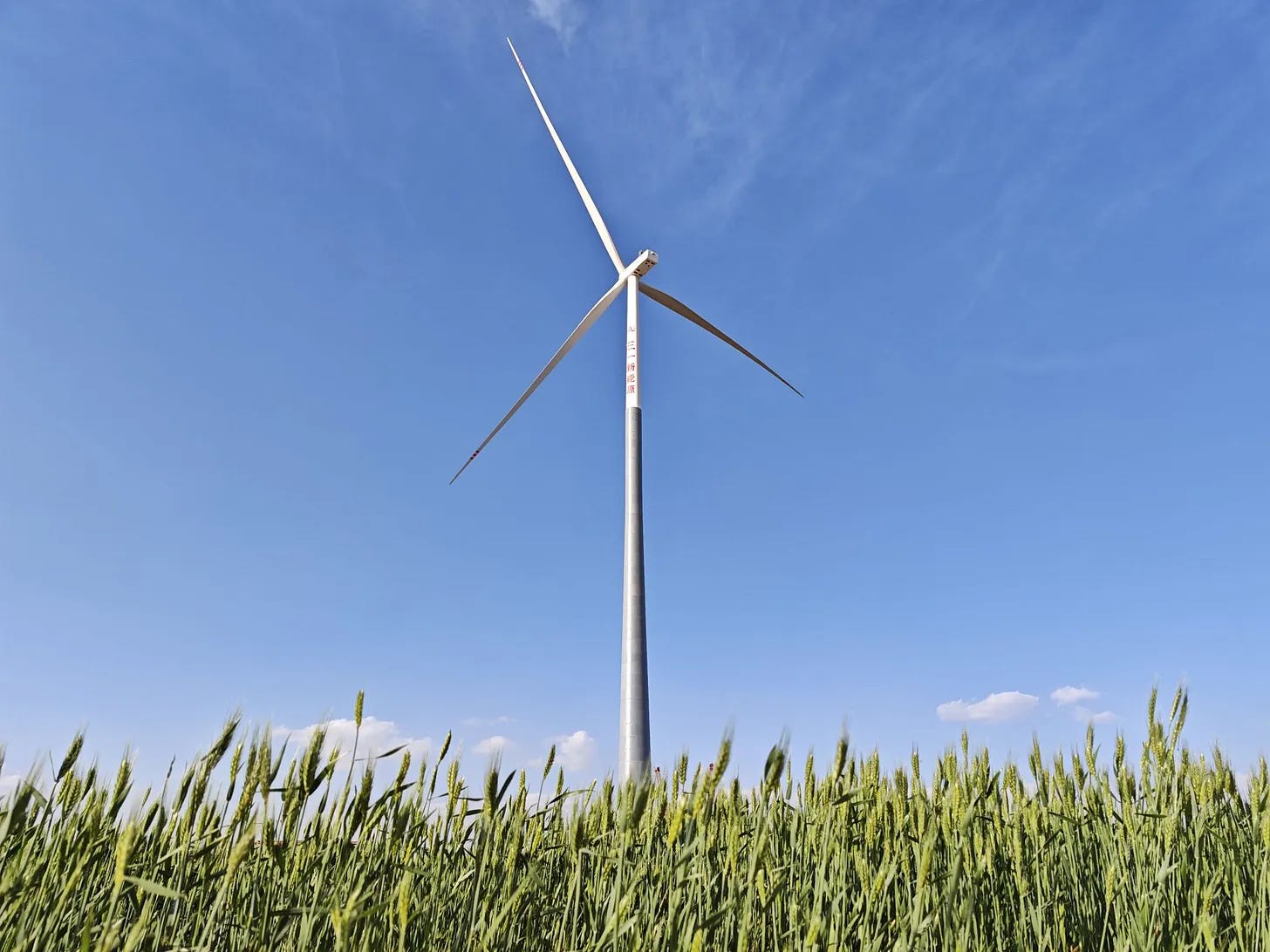Windletter #110 - The challenges of O&M in floating wind
Also: SGRE completes installation of its 21.5 MW prototype, Goldwind begins operations in Italy, Empire Wind 1 resumes construction, and more.
Hello everyone and welcome to a new issue of Windletter. I'm Sergio Fernández Munguía (@Sergio_FerMun) and here we discuss the latest news in the wind power sector from a different perspective. If you're not subscribed to the newsletter, you can do so here.
Windletter is sponsored by:
🔹 Tetrace. Reference provider of O&M services, engineering, supervision, and spare parts in the renewable energy market. More information here.
🔹 RenerCycle. Development and commercialization of specialized circular economy solutions and services for renewable energies. More information here.
🔹 Nabrawind. Design, development, manufacturing, and commercialization of advanced wind technologies. More information here.
Windletter está disponible en español aquí
The most-read pieces from the latest news edition were: what I believe is the best analysis of the blackout in Spain, Raya Peterson’s reaction to Ørsted’s cancellation of Hornsea 4, and Jérôme à Paris’s post on the same topic.
We also published a Windstory dedicated to analysing the state of wind energy worldwide, based on the GWEC report.
Let’s now dive into this week’s news.
🌊 How much of the LCOE in a floating wind farm corresponds to O&M?
Floating wind is still a technology in the midst of technological development. All currently operating floating wind farms in the world are prototypes or so-called pre-commercial parks composed of just a few turbines.
Indeed, the largest floating wind farm in the world is Hywind Tampen, in Norway, with 94.6 MW and 11 SG 8.0-167 DD wind turbines.
However, the arrival of the first large-scale floating wind farms is already starting to appear on the horizon. France, South Korea, and the United Kingdom, with 750, 750, and 400 MW respectively, are the countries with the most advanced projects.
But the challenges remain numerous and the uncertainties significant. One of the main focuses now is O&M, especially after the first experiences with major repairs in these pre-commercial wind farms. A situation that, on the other hand, is understandable if one considers that this is precisely the purpose of these projects: to serve as platforms for learning and continuous improvement.
In that sense, Alex Mira, Offshore Wind Manager at Naturgy, has shared an interesting reflection following an event by Global Maritime in Madrid. Global Maritime is a well-regarded consultancy in floating offshore wind, having participated in the two most complex maintenance operations to date:
Tow-to-port of a wind turbine from the Hywind Scotland project.
In-situ replacement of the electric generator at Kincardine, the first time in history such an operation was carried out.
The fact is that, according to Alex, it was mentioned at the event that O&M represents between 17% and 27% of the LCOE of floating wind farms. And that the feeling is that this number continues to grow. Alex adds:
It is essential to anticipate and define more accurately the cost of operating and maintaining floating wind farms. But perhaps more importantly, we must finally address unresolved challenges, such as how to undertake main components replacement at sea.
…
The industry is fully aware of the current limitations in major offshore repairs, and therefore must find technical solutions quickly in order to reduce uncertainty and risk.
It is truly difficult to have concrete figures on what floating wind maintenance might cost compared to fixed-bottom wind (in fact, it is likely a figure that the industry itself is still discovering). But to provide some context, I’ve found a couple of references for fixed-bottom wind:
OPEX benchmark in Europe – PEAK Wind (2022):
Average annual OPEX: €135,000/MW.
Observed range: from €80,000/MW/year (best cases) up to €338,000/MW/year (cases with higher costs).
This paper mentions that Ørsted reported the following figures in 2018. It is important to note that Ørsted is a “self-performer,” which in principle allows for lower costs than the average:
€100,000/MW/year for 3–4 MW turbines.
€67,000/MW/year for 6–8 MW turbines.
I truly wouldn’t know what range floating wind would fall into compared to fixed-bottom, although I understand a significant amount would have to be added, even if only due to uncertainty.
At this time, producing reliable figures for the actual O&M costs is quite a challenge. And it’s no minor issue: fully understanding these costs is key both to ensuring the economic viability of the projects and to enabling insurers to properly assess the risks.
🚧 Siemens Gamesa completes installation of its 21.5 MW prototype
It’s been a while since we last talked about Siemens Gamesa’s 21.5 MW prototype, and the truth is a lot has happened since then—so here’s an update.
Industry sources tell us that what is now the largest turbine ever designed and built on European soil is already up and running.
The best images and coverage have clearly come from the local press, which has easier access to Østerild. So for the curious among you, here are some links:
Let’s remember that this wind turbine is still not commercially available, and according to SGRE’s public statements, it is not yet known when it will be. In fact, Christian Bruch, CEO of Siemens Energy, stated that for now the prototype will be used to test the limits of the technology and to understand what it means to bring turbines of that size to market.
Something quite curious happened regarding this topic. I had come across some very good photos of the SG21-276 DD on LinkedIn—with a fair amount of detail—but when I revisited the link to bring it to Windletter, I found the author had taken them down.
It seems SGRE is still sticking to its strategy of maintaining secrecy—though it’s hard to hide a giant of that size.
🌍 Goldwind begins operations in Italy
Goldwind is hiring in Italy, and that can only mean one thing: its operations in the country are starting.
Specifically, they are recruiting a Site Manager and a Site Project Manager for the Apulia region, two roles responsible for day-to-day operations during the construction of wind farms.
I dug into the archives and found this contract with Alerion Clean Power to supply 7 x GW155-4.2 turbines, including a medium-term maintenance agreement.
This is yet another sign of the slow but expected entry of Chinese manufacturers into Europe and increasingly into the continent’s strongest markets.
Back in edition #76, we did a brief overview of the countries where Chinese OEMs had already secured contracts. A list that likely needs updating.
We’ll be keeping an eye on future developments.
🏗️ Empire Wind 1 resumes construction
Good news for Equinor and for the wind sector in general. Construction of Empire Wind 1 has resumed after being halted by the U.S. Department of the Interior on April 16.
According to Equinor, the decision comes after discussions with federal, state, and local regulators and authorities.
Equinor still needs to assess the economic impact of the suspension on the project (after all, halting all mobilized contractors for a month on a project of this scale must cost several million). Even so, Equinor’s goal remains to meet the commercial operation date in 2027.
In any case, the damage to the credibility and legal certainty of the United States is already done, and the resumption of works is unlikely to change investors’ minds, who now see the U.S. as a risky market. Just recently, RWE suspended its offshore development activities.
For those interested in the full backstory and timeline leading to the suspension, check out edition #108.
🧠 Optimizing offshore wind farm layout with machine learning
I really enjoyed the following post and video shared by Sven Utermöhlen, CEO of RWE Offshore, on LinkedIn.
The post discusses layout optimization in offshore wind farms and how it impacts both CAPEX and revenues throughout the project’s lifetime.
In onshore wind, layout design is typically much more constrained by various restrictions (land ownership, environmental regulations, existing roads, etc.). Offshore, however, there is far greater flexibility and a wider combination of variables to work with.
The challenge is to find the best location for each turbine within the defined area, while respecting minimum distances and other constraints. Four key factors influence the layout:
Cables: The greater the distance between turbines, the more cable is needed and the higher the electrical losses.
Wakes: Turbines placed too close together suffer reduced production.
Foundations: Heavily dependent on bathymetry and geotechnical conditions. Greater depth and poorer soil conditions increase foundation costs.
Logistics: The final location of turbines affects maintenance operations over the entire project life.
How is a good design decision measured? The industry uses the LCoE. By jointly optimizing production, CAPEX, and OPEX, the optimal balance can be found. And for this, RWE uses artificial intelligence and machine learning, enabling the automated simulation of countless combinations that would be impossible to perform manually.
Overall, I believe RWE does an excellent job in communication and in adding value around the renewable energy sector in general, and wind power in particular.
🔩 Sany installs prototypes of two new tower designs
Sany has announced on LinkedIn that it has connected to the grid two wind turbines featuring two new tower developments.
The first is referred to as a “self-adaptive prestressed steel tube concrete lattice tower”. It’s the first time I’ve encountered such a concept.
The tower, with a height of 147.1 m, has been installed in China’s Anhui province and supports the SI-20056 model (5.6 MW, 200 m rotor).
According to Sany, this solution reduces both tower and foundation costs without compromising safety. It is also the first lattice tower in China to be certified by TÜV Rheinland, validating its safety and reliability.
What’s novel about the design is that the lattice structure can extend above the blade tip, something not always possible with similar towers.
The second is a conventional concrete-steel hybrid tower, which isn’t particularly novel aside from its impressive 186-meter height. In this case, it was installed with an SI-200455 turbine (4.55 MW, 200 m rotor).
According to Sany, the entire project was developed using in-house technology, including the assembly process, which was carried out with the company’s own cranes. Everything stays in-house.
This type of tower is very common in Northern European markets such as Germany, which is precisely where Sany has set its sights.
📸 Images from the repowering of the Tahivilla wind farm in Spain
A few months ago, we mentioned in Windletter that Acciona Energía was set to carry out one of the most notable repowering projects in Spain: the Tahivilla Wind Farms (Río Almodóvar, El Gallego, La Manga, El Ruedo, and Cortijo de Iruelas), located in Cádiz, near Tarifa.
The figures are striking: from 98 wind turbines (MADE AE-5X, 800 kW) to just 13 Nordex turbines (N163 and N175, in 5.X and 6.X versions). Once repowered, the production of the wind farms will increase by 72%. A spectacular figure in one of the windiest areas of Spain.
Interestingly, some of the decommissioned gearboxes from this project have been recovered and put back on the market by our sponsor RenerCycle. They will have a second life in Sri Lanka.
Acciona Energía has now shared an interesting video showing the unloading and storage operations of components at the Port of Algeciras. Well worth a watch.
Thank you very much for reading Windletter and many thanks to Tetrace, RenerCycle and Nabrawind our main sponsors, for making it possible. If you liked it:
Give it a ❤️
Share it on WhatsApp with this link
And if you feel like it, recommend Windletter to help me grow 🚀
See you next time!
Disclaimer: The opinions presented in Windletter are mine and do not necessarily reflect the views of my employer.







